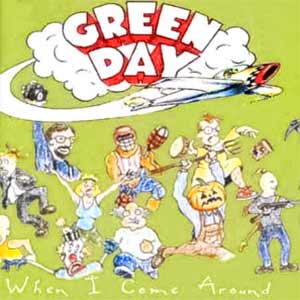Few songs capture the essence of youthful rebellion and self-assurance quite like When I Come Around by Green Day. Released in January 1995 as the fourth single from their breakthrough album Dookie, this track quickly became one of the band’s most recognizable hits, topping the Billboard Modern Rock Tracks chart for seven weeks.
Written by frontman Billie Joe Armstrong, When I Come Around reflects themes of independence and emotional detachment. The lyrics convey a sense of frustration with a relationship, where Armstrong reassures his partner that he will return when he’s ready, rather than conforming to expectations. The song’s laid-back yet defiant tone resonated with listeners, making it an anthem for those who valued personal freedom.
Unlike the fast-paced, aggressive punk tracks that dominate Dookie, When I Come Around takes a more melodic approach. The song is built around a simple yet infectious four-chord progression in G-flat major, giving it a smooth and approachable sound. This structure, combined with Armstrong’s raw vocals and Mike Dirnt’s steady bassline, creates a track that is both catchy and emotionally compelling.
tUpon its release, When I Come Around became one of Green Day’s most commercially successful songs. When I Come Around topped the Billboard Modern Rock Tracks chart for seven weeks2. It was one of Green Day’s most successful early singles, also reaching number two on the Billboard Album Rock Tracks chart. It peaked at number six on the US Billboard Hot 100 Airplay chart, tying with Wake Me Up When September Ends as the band’s second-highest song on that chart.
The song’s music video, directed by Mark Kohr, features a montage of urban scenes, reinforcing its themes of wandering and self-discovery.
Decades later, When I Come Around remains a staple of Green Day’s live performances and continues to be celebrated by fans worldwide. Its timeless message of self-reliance and its unmistakable melody ensure that it will always hold a special place in the history of punk rock.

